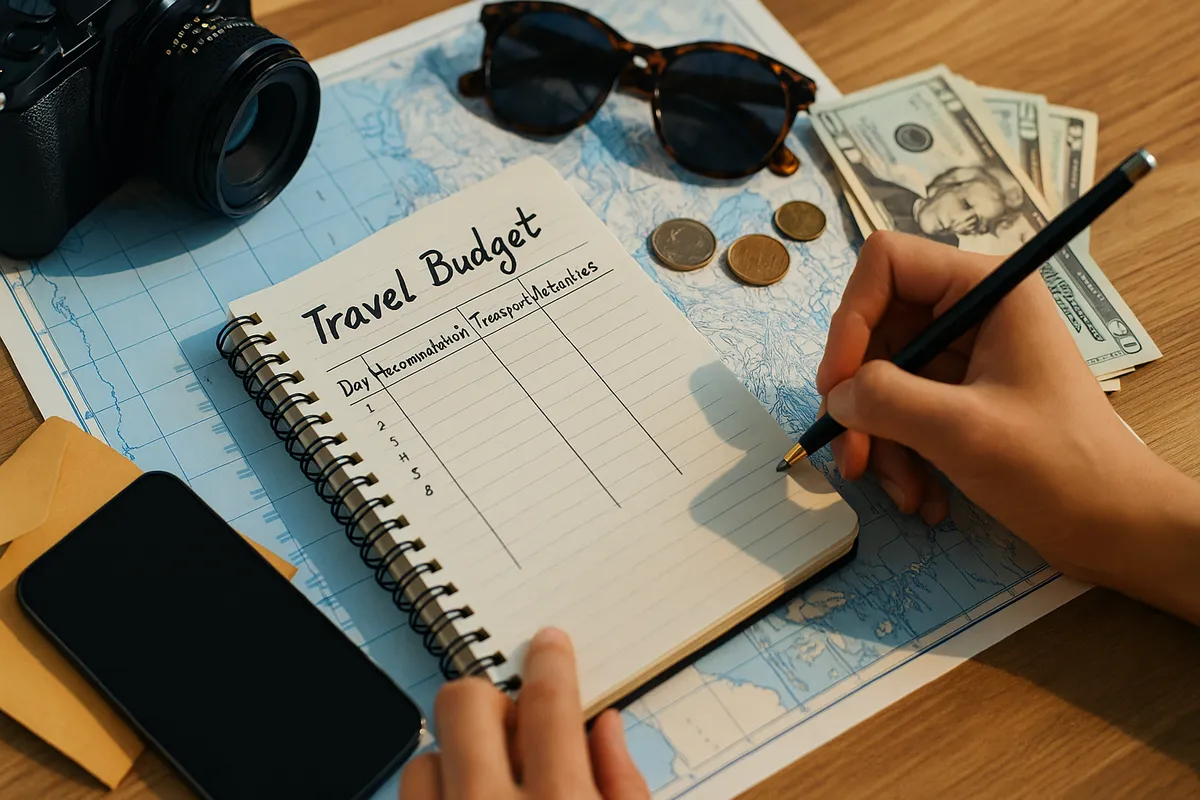How to divide your travel budget each day so you never run out of money
- Thursday, May 15, 2025, 13:39 (GMT+7)
How to divide your travel budget each day so you never run out of money
Many travelers have found themselves running out of money halfway through their trip. Others finish with a surprising surplus, unsure of how it happened. The real question is not how much money you have, but how well you manage what you spend each day. A smart travel budget should offer comfort without waste, flexibility without chaos.
Creating a travel budget may sound simple, but in truth it is an art that requires flexibility, attention to detail, and real life experience. Rather than listing a lump sum, breaking down the budget by day based on daily habits, local characteristics, and movement schedules makes the plan more vivid and manageable.
The starting point is always defining the total amount you can afford. This is not about limiting joy, but about establishing a framework for control. With the total number of days planned, a daily average is easy to calculate, but more importantly, each day should be weighted based on activity level. Travel intensive days will burn fuel, tickets, and rental costs. Days of rest will demand more on meals and leisure services.
Seasoned travelers often follow the three layer rule of budgeting: foundation, flexible, and contingency. The foundation covers accommodation, basic meals, and major transportation. The flexible layer includes entrance tickets, extra experiences, snacks, and souvenirs. And finally, a contingency reserve of at least ten to fifteen percent of the daily budget to handle surprises like a sudden downpour forcing a taxi ride or an unplanned meal with new friends.
An underrated tip is to create a mock budget before you go, complete with estimated prices. For instance, on the first day in Da Lat: light breakfast for thirty thousand, motorbike rental for one hundred fifty thousand, lunch for seventy thousand, coffee for fifty thousand, strawberry farm ticket for forty thousand, and dinner with local specialties for one hundred twenty thousand. The total estimate is four hundred sixty thousand. This kind of planning builds a clear spending pattern that is easy to adjust when needed.
Writing down expenses at the end of each day is another way to stay financially aware during the journey. You do not need anything complex, just a note taking app or a small notebook. Comparing the plan with actual spending often reveals habits that would otherwise go unnoticed. A spontaneous milk tea or a quick ride to avoid walking can quietly drain your wallet.
In group trips, aligning on a daily budget from the beginning helps avoid confusion. With a shared itinerary, tasks can be divided. One person handles food costs, another manages ticket expenses, and someone else consolidates the totals at the end of each day. For a more personalized group style, each member can manage their own expenses but should regularly update the group so everyone stays financially in sync.
Time is another important element in the daily budget. Days with more empty slots tend to invite more spending as people fill the gaps with shopping or snacks. Instead, plan for free or low cost activities such as walking, photography, exploring alleyways, joining community events or street festivals, or simply sitting in a beautiful corner watching life go by. These moments bring both relaxation and savings.
When traveling abroad, currency exchange rates can quietly disrupt your budget. Calculating in your home currency and then converting later often causes errors. Use the actual daily rate or round up to avoid coming up short. Also remember to include withdrawal fees, exchange commissions, and hidden charges from credit card transactions. Many travelers overlook this until the end of their trip when small costs have quietly added up.
Another useful trick is dividing your money into small envelopes or separate wallets for each day. Whether using cash or digital wallets, separating your funds gives a stronger sense of control and prevents overspending early in the trip. Many digital wallets allow daily goals or spending plans. With cash, organizing daily packets can help keep your mindset steady and avoid mid trip financial confusion.
Interestingly, travelers who plan their budgets in greater detail often end up spending more efficiently, with some money left for pleasant surprises like buying gifts or treating themselves to a massage at the end. A detailed plan does not kill spontaneity. It nurtures it within safe boundaries, allowing the travel experience to feel complete and carefree.
Psychology also plays a role. When you know how much you have spent and how much is left, peace of mind naturally follows. Uncertainty or fear of running out of money can scatter your focus and diminish your experience.
There are moments when unexpected deals appear, like a ferry ticket discounted by half or a flash sale on a day tour. Without a flexible budget or emergency fund, you might miss out. Even with a tight budget, it is wise to leave a small freedom fund for spontaneous choices without disrupting the overall plan.
Each travel day is a standalone unit of experience, but all are linked into a larger journey. Spending wisely each day is not just about managing money. It is about managing the quality of life in each moment. A trip that stays within financial reach without stress is a smart and sustainable adventure.
That is when travel becomes a true experience rather than a gamble between freedom and worry.

 CHECKIN.VN
CHECKIN.VN








Share on